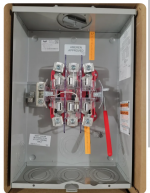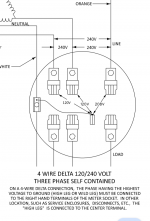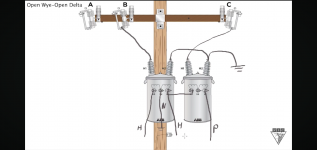Electricalhelp
Senior Member
- Location
- NJ
The electrical inspector is requiring the “C phase High Leg” to be connected to phase B in the 600amp 3 phase panel. He said everything is installed correctly to the service disconnect with the high leg on Phase C because that is what utility company requires. But when we pull our wire from our main disconnect to the 600amp panel, we need to swap the phases B and C in the panel making B phase the high leg.
In which section or reference of the NEC Code does it specify that Phase B must be designated as the high leg, as informed by the electrical inspector?
In which section or reference of the NEC Code does it specify that Phase B must be designated as the high leg, as informed by the electrical inspector?





